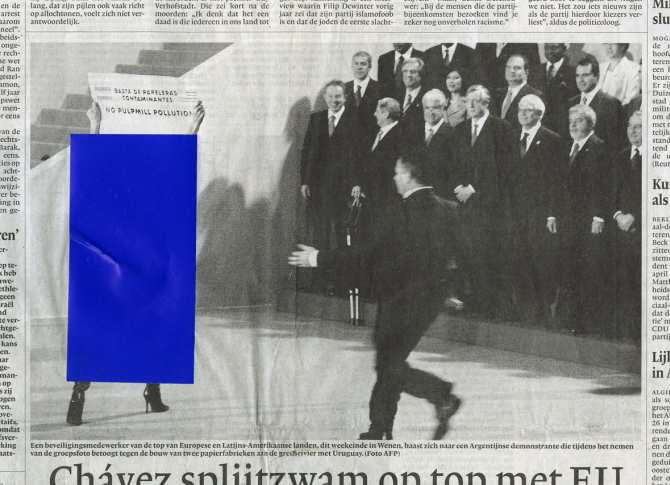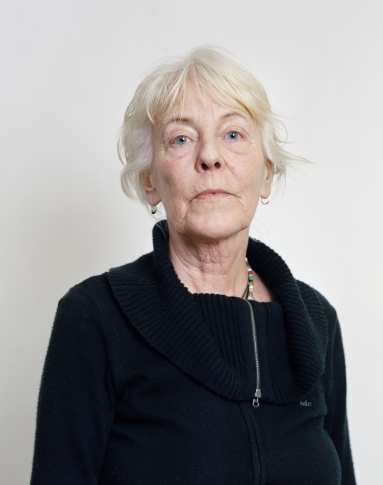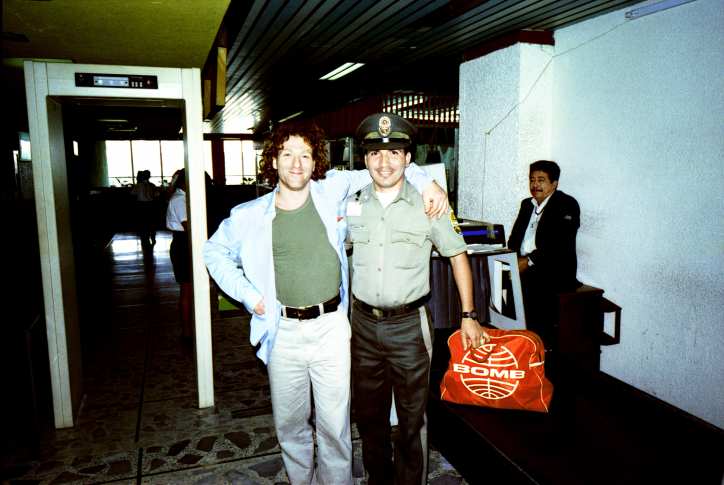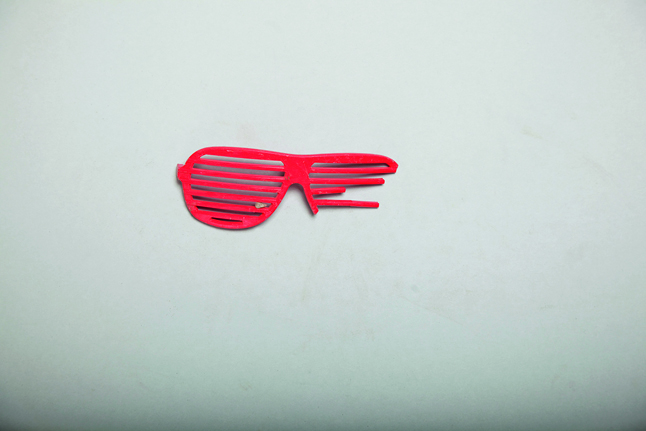Exhibitions
INNERE SICHERHEIT / THE STATE I AM IN #4
The premises of the Michael Horbach Stiftung are the location of further motifs from the series “Volatile Smile” by Beate Geissler and Oliver Sann, which thus produce the link to the premises on Ebertplatz.
Censorship also plays a role in the work of Dutchman Jan Dirk van der Burg. For the series “Censorship Daily” he works with censored newspapers from Iran. The censors’ primary concern is the photographs shown in the foreign newspapers sent to Teheran for foreign consulate employees – only a few explicit details have geometric shapes stuck onto them, rarely are entire images made unrecognizable; texts are in general unaffected. A special, idiosyncratic aesthetic thus arises due to censorship’s interventions.
For her series “What about the Heart?”, Englishwoman Luisa Whitton visited the Japanese scientist Hiroshi Ishiguro in his laboratory in Osaka. He builds lifelike robots there, one of them after his own image. Luisa poses rather emotional questions concerning this development and Hiroshi Ishiguro’s answers are not always scientifically analytical, either. How do people, their self-assurance, change in confrontation with robots – will the latter, one day, be considered entirely normal in daily interaction? And how is society changing as a result of the ever-more visible presence of machines, technology and robots.
For a while, Dutch photographer Petra Stavast was the tenant of an older, rather unprepossessing woman who, for some time, turned her back on the society in which she lived and lived in the Bhagwan sect. In her series “Ramya” she attempts to bring the woman’s two identities into harmony, contrasts her own portraits and photographs with found material – attempts emphatically to comprehend the past. Why did Ramya want to leave accustomed society behind, what did she find in the new community surrounding the sect leader Osho?
The protagonists in the video by the Italian photographer Francesco Jodice have also dropped out of society. In this case, however, it is more of an illness-conditioned refuge taken by young people in Japan, who are no longer able to leave their private rooms. “Hikikomiri” are often encouraged by their parents, as the latter, in order to conceal the “shame”, do not demand a behavioural change. Though the young people communicate via digital media, in social networks, they have an intrinsic fear of leaving their safe, familiar surroundings.
Berlin-based photographer Daniel Josefsohn described his life after a stroke for the readers of ZEIT-Magazin in his column “Am Leben” and also reported on some very personal things. The decision as to how openly we deal with our private life in public has to be repeatedly re-made. What is shared in blogs, in front of live webcams, in social networks, and what potentially changes as a result of it in society and in dealing with one another.
For the series “Am Güterbahnhof”, Cologne-based Allan Gretzki collected personal items such as spectacles, bags, jewellery, shoes or clothing after the Loveparade disaster in Duisburg in 2010, and documented them objectively. The mental images from this event, however, charge these items with a strong emotionality. Gatherings such as the Loveparade, but also demonstrations, should not be places of insecurity – crowds of people should not be fear-inducing, but rather they should convey a feeling of togetherness.
Englishman Stephen Gill deals with other finds. For his series “Off Ground”, following the protests and riots in 2011 in his neighbourhood in Hackney/London he collected stones that may possibly have been thrown by demonstrators shortly beforehand. In his studio he photographed them against a grey background, and thus drew up an objective inventory. These finds testify to unrest, to the resistance of London citizens to the changes in their city that led, in the course of the Olympic Games, to the gentrification of entire city districts and made the trends of property speculation clear.
How fast protest, and state reaction to it, can give rising to long-lasting violence can be remembered from the 70s, not only in Germany. The photographer Astrid Proll was herself a protagonist in the RAF and, in the book “Hans und Grete”, photographed private shots of Andreas Baader, Gudrun Ensslin, Ulrike Meinhof and companions – a counter-image to the public image that was coined by police and press photographers.
In addition to the artistic positions, these premises are also the location of a presentation of the virtual reference library, which has been filled by Katja Stuke and Oliver Sieber since March 2016 with short articles and film, book or music tips on the subject (www.photoszene.de). All articles have been printed out again and archived and are on show here.
The State I am In
Kunsträume der Michael Horbach Stiftung
Wormser Str. 23
50677 Köln - Altstadt Süd
Artist(s)
Beate Geissler und Oliver Sann,Jan Dirk van der Burg, Luisa Whitton, Petra Stavast, Francesco Jodice,
Daniel Josefsohn, Allan Gretzki,
Stephen Gill, Astrid Proll
duration
18.09. – 30.10.2016
Vernissage
17.09.2016 19.00h
Festival opening hours
18. – 25. Sept 11h – 19h (except Mon)
23. Sept until 22h
until 30. Oct
Wed + Fri 15.30h – 18.30h
Sun 11h – 14h
additional events
Artist and curator tour
18.09.2016 15.00h





